|
By Ausra Motuzaite-Pinkeviciene (get free updates of new posts here)
I hate flossing my teeth. It's one of the most tedious tasks I do. I don't know what makes it so boring. Is it the fact that I have so many teeth that require flossing? Having just 2 teeth would be great, wouldn't it? I could do it in two swift movements. Well, I guess one of these days I'll have only 2 teeth left. But until then I floss all of my teeth every day. Twice. I do it because I understand the benefits of keeping my teeth healthy. So the pain that goes into flossing is less significant than the joy of having functional teeth. Same is with organ playing. It might be boring to correct every mistake until I can't play it wrong. It might be boring to take a slower tempo than I seemingly can. But it's worth it. So here are 10 organ playing habits that help to keep my practice in a good shape: 1. Regular practice 2. Slow practice 3. Practice in fragments 4. Practice in combinations 5. Quiet registration 6. Stopping before I'm tired 7. Short breaks 8. Persistent practice 9. I allow myself to skip just one day without practice (except for emergencies) 10. Sight-read There was a time in my life when I didn't floss the teeth. Then I noticed I had to go to the dentist more often. But you know what? I hate going to the dentist MORE than I hate flossing my teeth. So there you go...
Comments
By Vidas Pinkevicius (get free updates of new posts here)
Yesterday we celebrated Independence Day in Lithuania. In the morning I also had a fascinating podcast conversation with the Italian organist and harpsichordist Maurizio Croci (the Artistic Director of Organ Academy in Fribourg, Switzerland) about his new CD "Bach Mirrored". This project is based on the concept to find out Bach's harpsichord and organ works that are based on similar patterns and creative procedures. Here 12 ideas that I learned from him: 1. Harpsichord helps organists to develop a better technique. 2. Harpsichord technique is meant to prolong sounds. 3. Organ technique is meant to make the sound more clear. 4. Intabulations were a standard practice among organists in the 16th and 17th centuries. 5. Same affects are valid for the same keys. 6. Bach's harpsichord and organ works often have commonalities. 7. Is it true for music of other composers as well? 8. Children love interdisciplinary events. 9. Variety is key in early music programming. 10. When composer creates, what comes first: keys or patterns? 11. In the 16th and 17th centuries all organists played any keyboard instrument of the day, including organ, harpsichord or clavichord. 12. For early music loving organists harpsichord is as essential as piano for enthusiasts of French symphonic style. Next time I'll play or listen to Bach's harpsichord works, I'll make sure to check for correlations with his organ works. If this topic is interesting to you, stay tuned for March 12 when my conversation with Maurizio goes live. By Ausra Motuzaite-Pinkeviciene (get free updates of new posts here)
I almost broke in into a stranger's apartment yesterday. We were going to visit my mom and dad. I tried the key to the door but it didn't fit before Vidas said that it's not their apartment number (the doors look the same on every floor). It turns out we were one floor below and we didn't notice it at first. This is because we just had an all-consuming practice class at the gym and our minds and bodies were fatigued. This was our neighbors apartment we were trying to get into. They have a dog and she started barking which helped us to come back to our senses. This curious incident got me thinking about our organ practice: How to give your best when you play the organ so that you'll get the most results? Here are 11 things to keep in mind: 1. Practice for at least 50 minutes 2. Warm up for 15 minutes 3. Focus your mind 4. Push yourself 5. When your'e exhausted keep saying to yourself "One More Time" 6. Slow tempo is best for practice 7. Repeat the fragments multiple times 8. Keep your eyes fixed on the score 9. Breath slowly and deeply through your nose 10. Relax your body 11. Drink some water every 15 minutes or so to stay hydrated If you do this, when the timer rings to stop you, you will feel quite drained out (both physically and mentally) but you'll notice considerable improvement on your organ pieces the next day. Do this for 30 days and you'll get a new habit that over time will change your playing 180 degrees. (And maybe next time when I try to break into our neighbor's apartment, their dog will let us in). By Vidas Pinkevicius (get free updates of new posts here)
Those double pedals have been killing me. In 10 days I will be performing Widor's Andante Sostenuto from his Symphonie Gothique in a joint recital with Ausra "Laudate Dominum": Part #18 of "7 Centuries of Organ Music". I've found it very enjoyable process to practice this composition: the style is all legato, cantabile melody in the right hand, double note accompaniment in the left hand and sometimes even double pedal part. And colorful chromatic harmony, of course. I keep hitting the wrong notes in double pedal lines, especially in the 1st page and it's been difficult to achieve legato in the extreme edges of the pedal board. In order to help you master this beautiful piece, I've just finished creating Widor Andante Sostenuto Video Training. Those left hand accompanimental figures don't feel too natural to my hand and I keep mixing them up. Come practice with me and let's make those mistakes together! It's a good feeling. Check out this training if you want to learn it together with me (50 % discount is valid until February 22). By Vidas Pinkevicius (get free updates of new posts here)
On the day I tuned the reeds of my organ, one of my students helped me by pressing the keys. After the tuning was over, he had a nice chance to practice on his own. Currently he is practicing Pachelbel’s Chaconne in F Minor. Although I worked on my own things during this time, I overheard him play and couldn’t resist the urge to help him a little with this piece. So here’s what we found out. 1. Start And Finish on Principal 8’ Although Mattheson from the 17th century argues that Chaccones and Passacaglias have to be played on Organ Pleno registration, I used a different approach because we played a rather modern and eclectic organ. Isn’t it nice to hear a simple Principal 8’ on its own? This could work for the theme in the beginning and the end of Chaconne. When my student played, I didn’t hear anything wrong with this kind of registration. Yes, you could start and finish with Principal Chorus and mixtures, Posaune in the Pedals, but remember, this Principal chorus should be of very high quality to be able to hold the listener’s attention for a long time. 2. Find One or Two Culminations When you try to register this piece using a different approach from that of Mattheson, you have to find one main culmination and at least one other variation with the close level of loudness. Preferably the main culmination shouldn’t be in the middle but towards the end of 2/3rds of the way or maybe 3/4ths in other cases. The main idea is that the way which leads to the main culmination is longer than the way which leads from the culmination to the end of the piece. It’s true in this Chaconne also. We have found a very active variation in the manuals where some of the loudest stop combinations could be employed. 3. Change Manuals on Each Variation Should you change manuals on each variation or should you play on a single keyboard all the time? Again, it depends on the nature of the instrument and its stops. On my organ more variety is always a pleasant thing (although I shouldn’t say that the Organ Pleno sound for extended periods of time couldn’t be pleasant in some cases). But it’s always a good idea to be gentle with listeners ears and changing the manuals frequently allows for an easier change of registration on mechanical action organs. That’s just the nature of this beast. 4. Contrast Same Color Stops on Different Divisions When you decide to change the manuals frequently, you obviously are left with the question of what colors to use? One of my favorite techniques is to register each variation so that one hears Principal 8’ contrasted on a couple divisions in a row, then perhaps Principals 8’ and 4’ and so on. Because of this approach the listeners will also get a nice glimpse into the color possibilities of your organ. By the way, if you don’t like any particular division on your organ, don’t use it on every piece. On my organ, the Swell works well for the Romantic and Modern music but for the Baroque style it’s too dark. That’s why I use Great and Positiv only for early music most of the time (with some exceptions, of course). 5. Too Much Loudness Isn’t Always a Good Idea At first my student and I came up with the concept to keep adding stops until the main culmination and then gradually subtracting them. But the result was too loud, I think. I even played on Bombarde 16’ with manuals coupled. That sounded more like a Romantic idea. When you couple the manuals together and use doublings of the same pitch level throughout the piece, little by little you forget that it was written in the Baroque period, even though the harmonies and figuration remind you of that. It’s not that in the Baroque times they didn’t play loudly but it’s this thickness of sound which reminds more of the Romantic school of writing and playing the organ. 6. Achieve Crescendo Up to Mixtures, Trompette or Manual Coupler We decided to add principal stops gradually until the 1st culmination, then to back off a little, playing without some of the loudest stops. This way we could postpone them until the real culmination came in. The result was I think we used Principal Chorus with mixtures and Manual Coupler or Trompette 8’. 7. Use Flute Combinations for More Variety You probably have a question if one can use flute stop combinations for more variety in places which have a thin texture or slow rhythmical values. In other words, can you use flutes in pieces like Passacaglia and Chaccone? It’s not a convention, of course, because traditionally the flutes might be suited well for chorale variations or chorale fantasias to showcase the colors of the organ. But again, it depends on what kind of instrument do you have at hand. On a real Baroque organ I wouldn’t need to use flutes because the Principal chorus sounds convincing and not too much in your face. On the modern eclectic instruments – feel free to experiment any way you like because the most important thing is whether or not the piece will connect to your audience. 8. If In Doubt, Simplify What if you don’t know what type of sound combinations sounds best on your organ? What if you lack experience in playing hundreds of different instruments which will provide you with good taste eventually? I always try to simplify things – I stay on the same manual when there isn’t a real need to switch, I don’t change the stops more often than you need to. It’s rare that my performance will improve because of this. In a high quality piece, music will speak for itself (don’t play any other kind of music, by the way). 9. Pedals Can Have Posaune in Culmination I’ve heard an idea before that the pedals should stay on the same registration throughout the Chaconne or Passacaglia. It depends on the piece, really. It’s nothing wrong to add Posaune 16’ at the culmination, even if you don’t use Principal Chorus throughout. In this Pachelbel’s Chaconne, the secondary culmination also asks for Posaune. So my student and I ended up not softening the pedals until the main culmination after which we gradually reduced to Principals 16’ and 8’ in the pedals. 10. Analyze Harmony of the Theme to See Patterns It seemed strange to me that after working on different layers (right hand, left hand, and pedals) and combinations my student couldn’t play the piece quite fluently. Not only his technique needed more work but there was something else too that was going on. I felt that he couldn’t recognize the harmonies and patterns he was playing. It’s important because we all know that Chaconne or Passacaglia has a number of variations on the ground bass. This means that the theme in the pedals most of the time stays the same and the harmony doesn’t change. The only thing that changes are figurations. So I suggested him to analyze the theme and its chords which should help him eventually. 11. If You Like This Chaconne, Use the Same Figuration for Different Themes Here’s the thing – any piece can be used as a model for improvisation or composition. So one thing you can do is to come up with a different 8 measure theme and apply the same type of figuration throughout each variation. I once took a longer Gavotte by Rameau, converted the theme into triple meter, analyzed another Chaconne by Pachelbel and improvised my own set of variations based on his model. It’s a very fun process, you’re sort of becoming a student of any particular composer that you like. (And.. if nothing else, you can try to make friends with an octopus. They're really smart.) By Vidas Pinkevicius (get free updates of new posts here)
I hate when people ask me to tune the organ before they even had practiced on this instrument. Maybe no tuning is needed. Beside most often organists who ask, actually don’t notice that it’s tuned. All they care about is what do other people think of them. The other day of my organist friends had to play a recital in our church and asked me if I can tune some reeds. I said yes. So I asked one of my students to press the keys for me (he had a nice long practice afterwards) and went to church. Here’s what I learned: 1. In winter, reeds need to be lowered. It’s quite cold in the church right now. 15 or 16 degrees Celsius. Above freezing. It’s cold to me because the church is actually heated yet when you sit for hours on the organ bench, your butt gets cold anyway. When they built this organ, the organ builder tuned it at 440 Hz when it was 18 degrees. So now in the winter the pitch level dropped a bit. Last time I checked it was 437 Hz. And it’s tuned in Kirnberger III. Metal principals react to temperature changes more than reeds. So now the reeds for the most part are too sharp. I had to check each of them and many needed to be flattened. After a while you get used to this. And don’t even check the tuning machine. They’re sharp. Not too much but enough to cause unnecessary vibrations. 2. Some reed pipes need to be raised. But once in a while I heard that a few pipes sounded flat. That seemed strange. Maybe those pipes caught a cold? So I had to be careful and spot those pipes and raise their pitch level a little. 3. Check the pitch level of middle A before tuning. Do you know what was the biggest mistake I once made while tuning the reeds? I tuned some stops but didn’t check the A and some other metal pipes. So I got it all wrong. Cost me 3 hours of work. But a good lesson, I think. 4. When pipes don't speak, clean them. You can find so many strange things in the pipes that clogs them from sounding. Mice poop, bat and bird poop, insects, dust from construction. I once found a mummy of a fly trapped in the shallot. Took a picture as a souvenir (see above). Didn’t want the fly, though. I found a few reed pipes that didn’t sound. So I took them apart, tested how clean they were and sure enough, some of them had dust in them. When I cleaned them they started to speak. With big pipes it’s a fairly difficult work to take them apart. You have to be careful and lift them, turn the resonators gently so that the blocks would separate from them. After that you have to look at the tongue and see if anything has stuck. Then you need to take the tongue apart and with a soft brush gently clean them. Finally, put it all together and test how the pipe sounds. 5. The tongues need to be in the exact position with the shallots. Strange thing happened the other day when I was tuning the reeds. One of the pipes didn’t sound but when I took them apart, I didn’t see any dust, insects or dirt. This got me thinking what else could have been wrong with it. Suddenly I realized that tip of the tongue was not leveled with the shallot. It dawned on me that if I remove the wedge, press a tongue a little bit inside, and put back the wedge, then the sound would magically reappear. What a clever idea! It worked. Now I know that the secret to the good speaking reed pipe is not only removing the dirt but also leveling the brass tongue with the shallot. 6. Tune C side first, then C# side. I had to tune the most often used pedal reeds which were positioned diatonically because of pedal towers. It didn’t make sense to tune these pipes chromatically C, C#, D, D#, E, F and so on because on the one side were the C pipes: C, D, E, F#, G#, and Bb and on another C#: C# D#, F, G, A, and B. So it was quicker for me to tune the C side first and only then do the C# side. Since pedal compass is about twice as narrow as that of the manuals, it took me not too much time to work on the pedal pipes. To my surprise, Posaune 16’ was more out of tune than Trompette 8’ in the pedals (maybe because I use it more often). 7. When there are central towers, tune in major thirds. The pipes of the Great and Positiv on my organ have central towers which means that not only there are C and C# sides for symmetrical design but in each side there are symmetry around the largest central pipe. In this way the pipes are positioned in major thirds. Because I didn’t want to be jumping from one side of the tower to the next, I asked my student to press the keys in the following order: C-E-G# etc., D-F#-Bb etc., C#-F-A etc. and D#-G-B etc. As I expected, Bombarde 16’ was more stable than Trumpet 8’ which had to be flattened most of the time. 8. When pipes are positioned in a row, tune chromatically. When I went inside of the Swell division, I knew that the pipes were positioned from the tallest to the smallest pipe chromatically. This is because they are not visible from the outside and no symmetry of design is needed. Because of enclosed Swell box, the temperature inside of it is a little higher than the rest of the organ and the Trompette 8’ usually needs to be tuned quite a bit. This time, however, I was surprised - it was more or less stable with just a few adjustments. 9. Double check each pipe after tuning. When you tune the pipe, sometimes it slips back to the previous state, especially with shorter tongues. Therefore it’s a good idea for my tuning assistant to hold the note while it’s being tuned and repeat it shortly when the tuner says “Next!” Before I knew this rule, I had a few cases where the organ pipes were tuned just before the recital but in the actual event some pipes were still a little off. So double check just to be sure. 10. Tune to Principal 4' of that division. One last advice is to traditionally tune the reeds to the Principal 4’ of the division on which they are positioned. Yes, I know sometimes this particular division might have principal 8’ or even 16’ as the foundation but somehow it seems to be a custom among organ builders to use Octave 4’ in this case. Oh, and by the way, my organist friend didn’t notice the tuned reeds at all. He just played almost everything loud and fast. That’s how he is. Not really a friend. More like a tank. Welcome to Secrets of Organ Playing Podcast #81!
Today's guest is Carlotta Ferrari (b. 1975) who is an Italian composer writing for organ and variety of other instruments. She served as chair of music composition at Hebei Normal University in Shijiazhuang, China, and is currently professor of music composition at the European School of Economics in Florence, Italy. Educated at the Conservatory in Milan, she has composed in many genres, developing a personal language that is concerned with the blend of past and present. Her compositions have been performed frequently around the world. Her compositions have appeared on Waterwheel World Water Day Symposium and WPRB radio Princeton NJ, and have been performed in venues such as Harvard University, New York University, Steinway Haus in Hamburg and München, National Center for Performing Arts in Beijing, Universidad de Castilla-La Mancha, St. Gallen Cathedral, St.George’s Hanover Square in London, Manhattan Central Synagogue in NYC, Oliwa Cathedral in Gdansk, Basilica di Santa Croce in Firenze, and other relevant theaters and churches. Carlotta Ferrari won the 2nd prize at 2013 edition of Sisì-Frezza competition for women composers held by IFBPW (International Federation of Business and Professional Women). She received the auspices of the President of Italy in 2008 for the premiere of her secular Cantata dedicated to the victims of terrorism. Ferrari’s music appears on several CD recordings, including five all-Ferrari organ CDs: three recorded by Carson Cooman (2014 and 2016) and two by Peter Clark (2015 and 2016). Carlotta Ferrari is a member of International Alliance for Women in Music, and Italian Society for Contemporary Music. Her current research interest lies mainly in contemporary modal music: she is working on RPS modal system, a new compositional grammar in cooperation with Harvard organist and composer Carson Cooman, who first developed it. Also she is currently cooperating with Marco Casazza, violinist and physicist, on the relationship between art and science. She encourages the diffusion of her works worldwide (please visit her Imslp page). In this conversation Carlotta talks about her love of counterpoint, modes, and being a woman composer in today's world. Enjoy and share your comments below. And don't forget to help spread the word about the SOP Podcast by sharing it with your organist friends. Thanks for caring. Listen to the conversation By Vidas Pinkevicius (get free updates of new posts here) As you may have read my recent post, there are at least 18 things you can do to introduce children to pipe organ. Ken, Andreas and Irineo had interesting and valuable ideas for children and pipe organ. I'm re-posting their comments (in italics) to make this additional resource full of ideas (thank you all for your generosity of sharing ideas). Hi Vidas: Love your article. But you're way to progressive for churches, and least here in US. When I was young, we weren't allowed anywhere near the organ console, let alone the organ chambers. Adults in charge think it is their own private BMW or something similar, only adults can play it, and children will just wreck it if they get near it. Most smaller churches here in US only have electronic organs anyway, and organists who are untrained, are poorly paid because there is no money. And most think it is a big piano. It wasn't until I was in college in Rochester, NY at Rochester Institute of Technology, that I heard a real pipe organ, and eventually was allowed to play one. I was piano accompanist for my large high school choir, and had been playing since 3rd grade. Didn't matter much, at home. Sorry if this reply is a bit disorganized or confused, but I think you get the idea. The actually story is just too long. Keep up the good work. All the best, Ken Barta I think it's very important for adults be generous and let the children see the organ, touch it, play (with adult supervision, of course). Otherwise the idea of pipe organ will not be accessible to them and they will miss out on the joy it provides. Here's what Andreas wrote and warned against putting lead pipes into mouth: 1 Let them visit an organ builder facility, if not too far away. It must have been 83 or 84, perhaps 85, when our music teacher in high school organized a voluntary visit to the Schuke organ facility in Berlin (Zehlendorf). Not mandatory, but some small extra credit. You probably know the name Schuke. 2 Ask an organ builder for scrap. I bought my pedalboard and bench from an organ builder in Western Ohio that was managing an organ of a church that went bankrupt. The bench has some hollow space in it, and I was paying for shipping by volume and not by weight, I asked him if he could put some scrap pipes in it. And he did, at no extra charge, they'd have to throw them away anyway. I now have a lead pipe, a wood pipe, and a metal reed pipe. That can be fun for kids, but perhaps put some plastic or tape over the mouthpiece, as lead is poisonous. That's why I would be careful with your comment to blow a pipe, because most beginners playing the flute / recorder SUCK at the mouthpiece, some even lick it. You are supposed to "fold" your lips a bit and always keep the outer part dry and touch the mouthpiece ONLY with the dry outer lips. Never inside, never tongue -- although you use the tip of the tongue for some staccato. Don't do that with an organ pipe, the inner lips or tongue should NEVER touch the lead. Many Roman emperors died from lead poisoning, as they drank too much wine with their metal cups, not knowing yet that lead is poisonous. We are now able to ascribe many emperor deaths to lead poisoning. 3 let them watch some tubes. There is one that shows how organ pipes are made: they have a mold, and they pour liquid lead over it, let it cool, then bend it and cut it ... and you can re-use the cut-offs, as you can put them back in the melting pot ... a lot of really cool stuff on YT. Then perhaps also include that some wood pipes may have a metal mouthpiece, or "overlay". Maybe that's not lead, I can't tell which metal it is. But the woodpipe I have has a small metal piece at the mouthpiece, so that could be touched by lips or tongues of a child. The best would be to make some small adapter from plastic, or perhaps a straw? Let me experiment with that. I'm sure you could find some straw or plastic flex tubing to put over the mouthpiece, so you can blow through it without touching it with lips/mouth/tongue. bamboo? coffee filter? Let me look for something, I have five junk boxes. As you can see, my wood pipe has a metal tip. Everyone has some junk in the household. Although I don't know which metal that is, perhaps not lead, you're safe with:
1 some plastic flex tubing. I have a vacuum pump to seal food plastic bags. It has an auxiliary suction outlet, and you can take that -- it even has a pip that fits directly into the pipe's mouth piece. 2 a plastic cover from a Glade scented air container. Cut off the tip with a scissors, and fit the round opening over the mouthpiece. 3 at worst, use a toilet paper roll :) In the end, you can simply take the metal piece out (pull, screw, ...), saw it off, or just break it off. The wood pipe is long enough, and it's scrap anyway. You can show kids stuff like this: https://www.youtube.com/watch?v=LpfPg3_RxLA https://www.youtube.com/watch?v=UV2T3wAvNnU (explains why the sound depends on using lead and tin) https://www.youtube.com/watch?v=VnWqwncGhoo https://www.youtube.com/watch?v=_p7gYnIdT2s https://www.youtube.com/watch?v=1exgR9uuuN4 From that you could go into physics, math, or show comparisons: a flute/recorder is similar, in that people use their fingers to "close" the pipe to create different notes. Or the children's slide whistle, which is basically like gedackt organ pipe. Andreas Lauschke I especially like Irineo's idea to take children into organ chambers while it's being played. I might try this myself in the future but I do have to be careful about dusty environment and falling down from 2nd or 3rd levels of the organ: Watch and listen to a professional organist play an easy/catchy tune at the organ. It shall make it easier for children to memorize the sounds they hear. For instance the Pastorale in F major BWV 590, being as sweet/soft/gentle as it is. Listen to a professional organist improvise a sweet tune using some soft flue stops, like the Holzprinzipal or Unda Maris. Take a few children inside the organ case while a tune is being played. It's both an acoustical as well as visual experience. Just my 2 cents, maestro. Greetings as usual. Very truly yours, Irineo Thank you, my friends for so many great insights you so generously share with our little community of organists around the world. I just hope people will be inspired to try some of them in real world situation. By Ausra Motuzaite-Pinkeviciene (get free updates of new posts here)
Can you play organ in a way that your listeners wouldn't want you to stop? Can you transfer them temporarily to another dimension, to another world of sorts from which they wouldn't want to come back so easily? Last Sunday Vidas and I went to visit my uncle's family here in town. They are wonderful people and frequently have very interesting guests. This time was no different. When we came in, our common acquaintance, painter Antanas Beinaravicius with his wife and my uncle with aunt were having an exciting discussion. When we joined them, Antanas shifted the discussion to organ related things, such as which instrument can be considered the best, is there the best and how he felt during Vidas recent improvisation recital. He said, "You know how sometimes you are at a concert and you wish it would end sooner. Or when you listen to some really boring music, you don't want it to last. But Vidas played in a way that I wanted the music to keep going. With depth and meaning." I think this is one of the highest compliments one can receive as an artist. How can you help your listeners feel this emotion? By Vidas Pinkevicius (get free updates of new posts here)
This week I've been practicing Bach's Piece d'Orgue, BWV 572 also known as Fantasia in G Major as a preparation for Ausra's and my joint recital "Laudate Dominum" which will be the 18th part of our cycle "7 Centuries of Organ Music". I discovered that the most difficult part in this beautiful piece is the Gravement section with it's imposing 5 part texture. The intricate polyphony, constant syncopations and suspensions create a problem: It's so easy to play everything legato and not to hear the separate melodic lines. The way to overcome these difficulties is by practicing each part separately and in combinations. However, it's also possible to control the releases by playing everything together at extremely slow tempo and stopping at every beat, resting, looking ahead one beat, preparing and then playing again until the next beat for starters. Here's an article I wrote earlier about how to learn to play this masterpiece. I have created BWV 572 Video Training which will help you master Bach's Piece d'Orgue (50 % discount is valid until February 15). |
DON'T MISS A THING! FREE UPDATES BY EMAIL.Thank you!You have successfully joined our subscriber list. 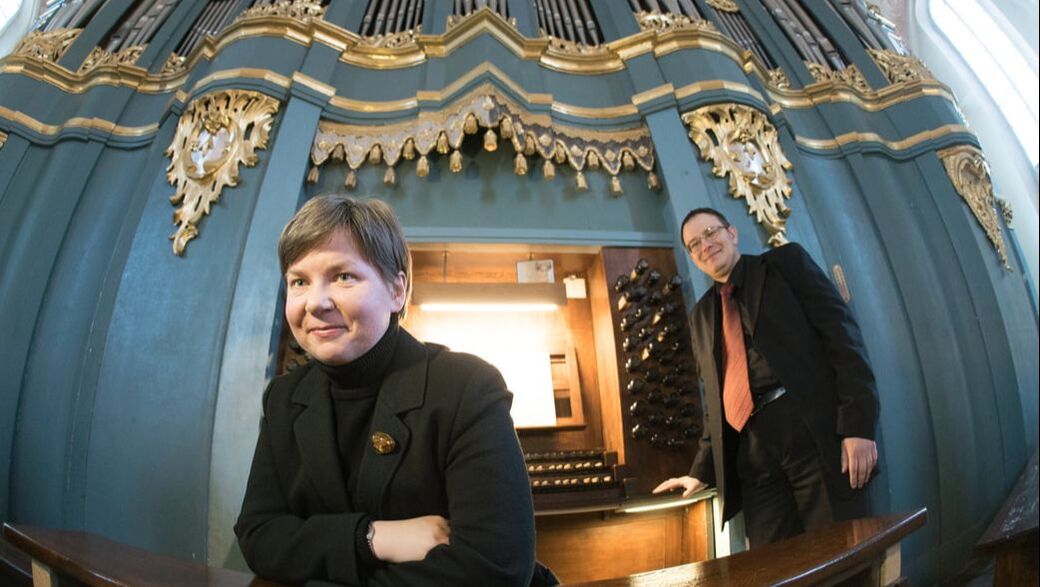 Photo by Edgaras Kurauskas Photo by Edgaras Kurauskas
Authors
Drs. Vidas Pinkevicius and Ausra Motuzaite-Pinkeviciene Organists of Vilnius University , creators of Secrets of Organ Playing. Our Hauptwerk Setup:
Categories
All
Archives
July 2024
|
This site participates in the Amazon, Thomann and other affiliate programs, the proceeds of which keep it free for anyone to read.
Copyright © 2011-2024 by Vidas Pinkevicius and Ausra Motuzaite-Pinkeviciene.
Terms of Service and Privacy Policy
Copyright © 2011-2024 by Vidas Pinkevicius and Ausra Motuzaite-Pinkeviciene.
Terms of Service and Privacy Policy


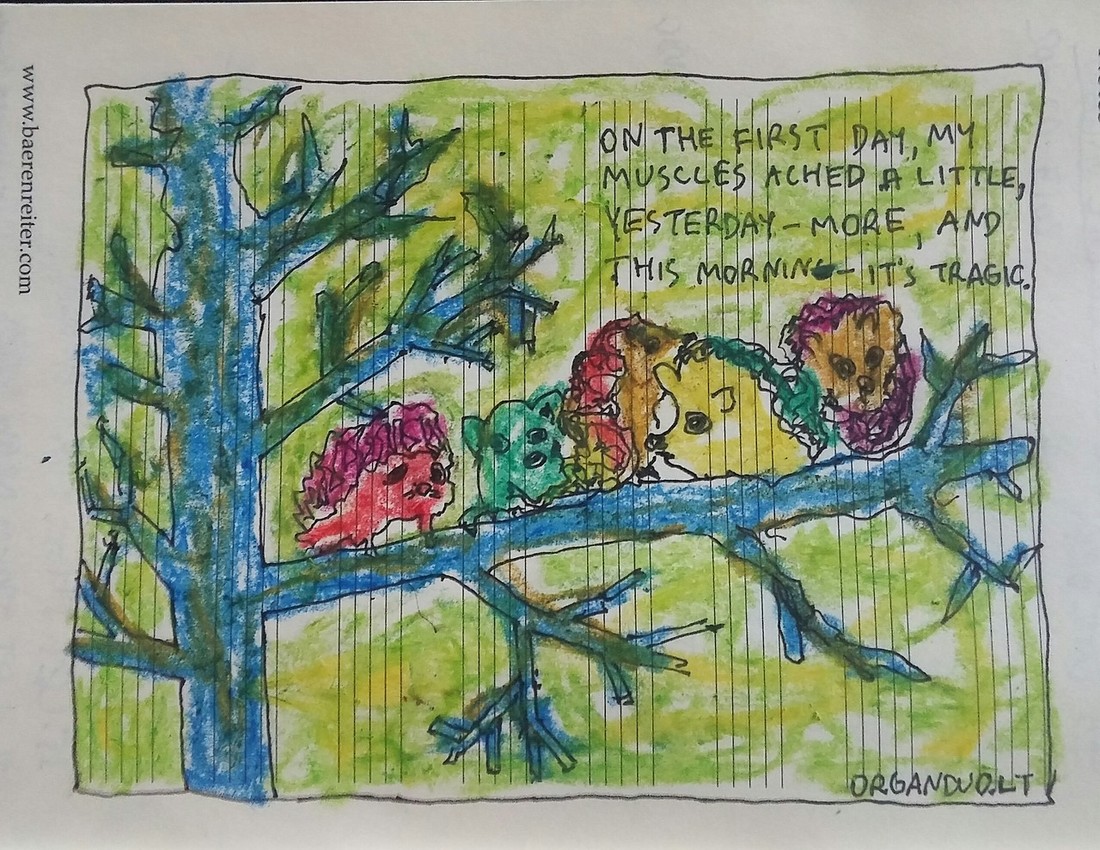
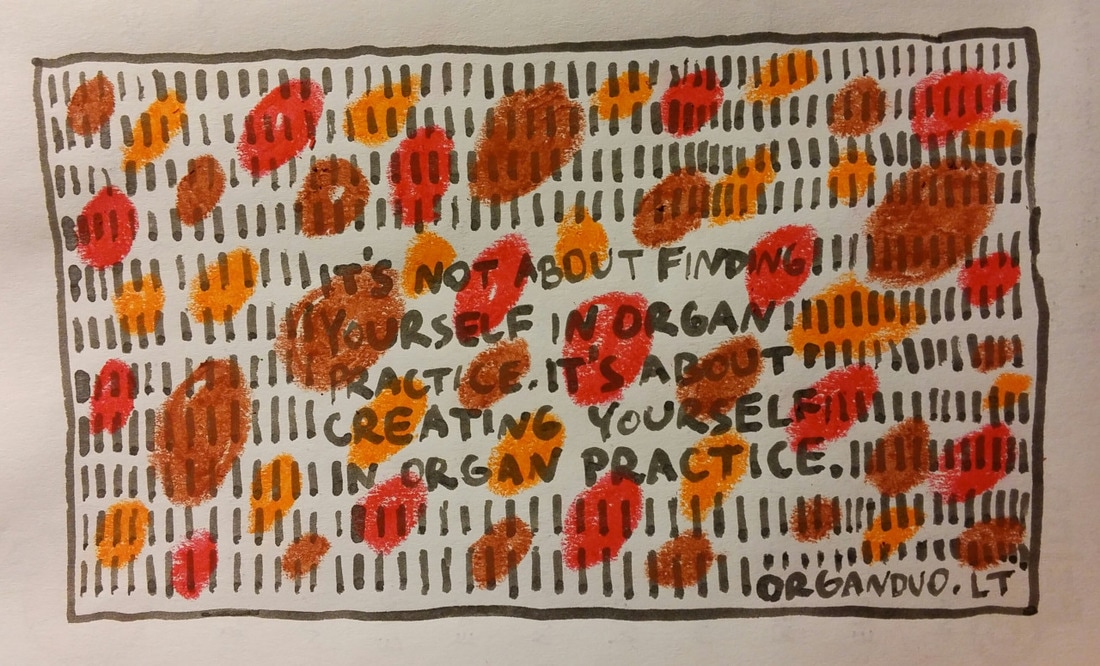
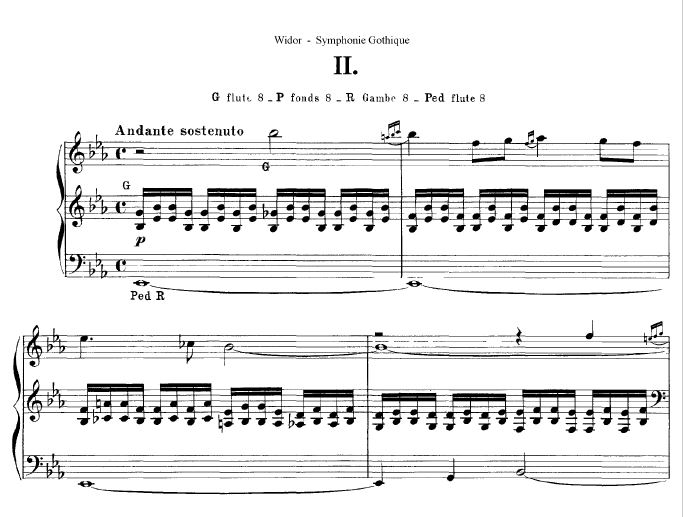
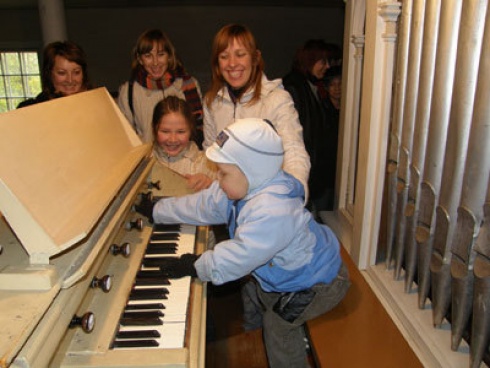

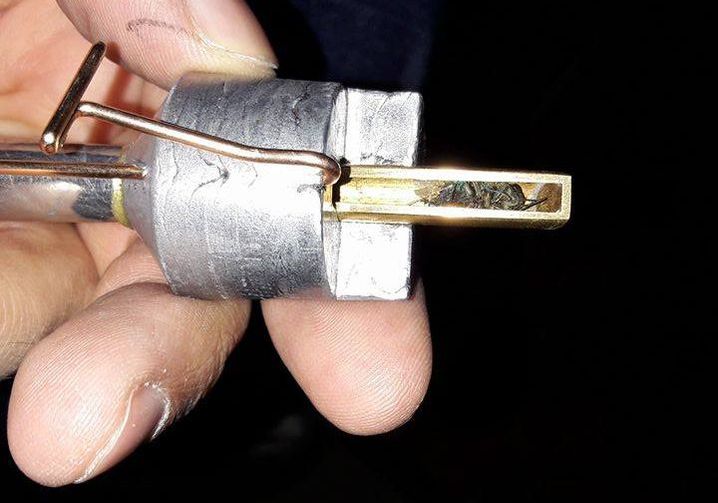

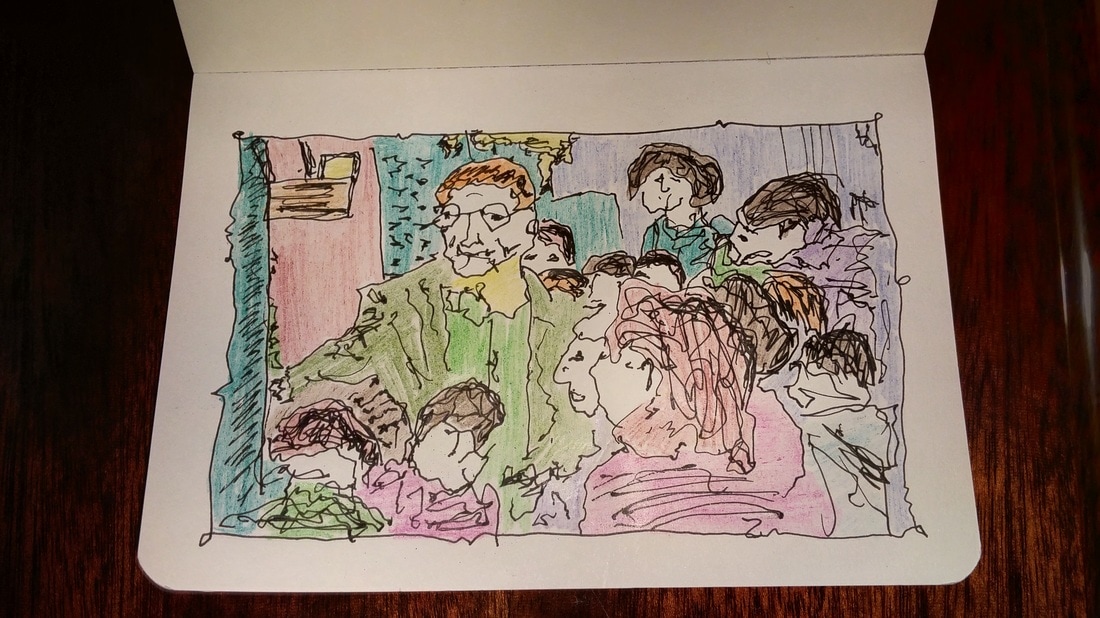
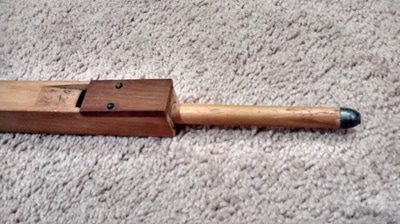
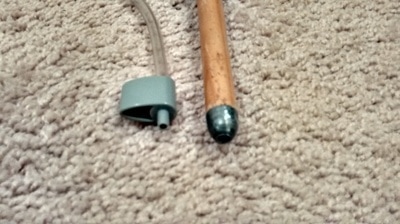
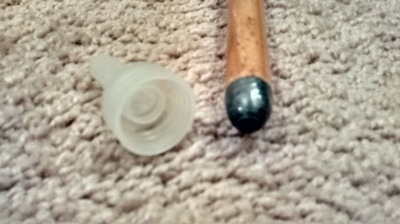
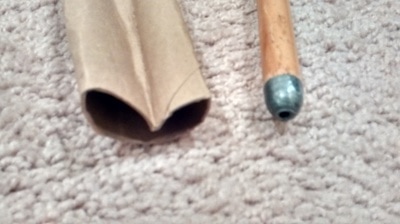

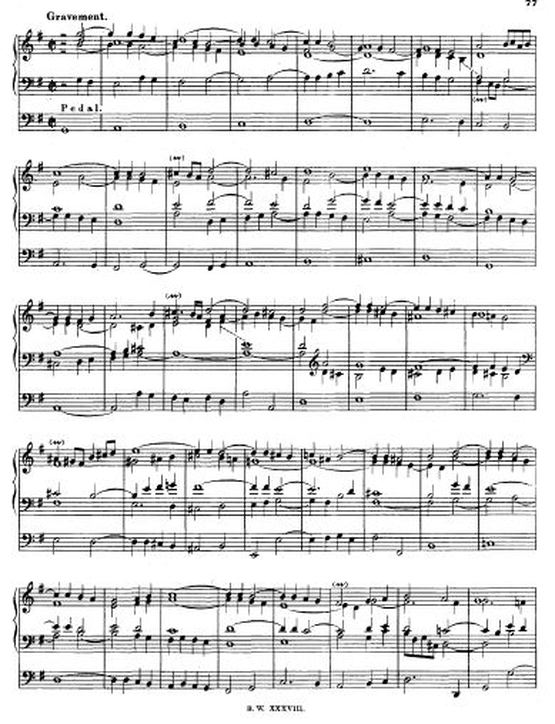



 RSS Feed
RSS Feed